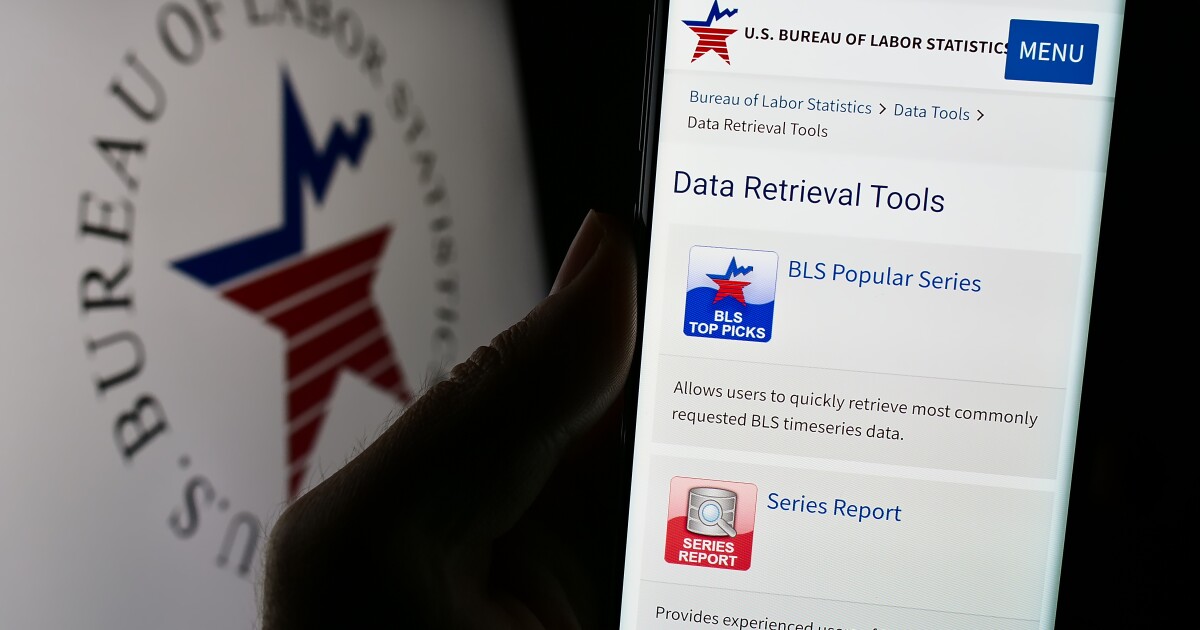
May's strong jobs growth is likely to affect
Total nonfarm payrolls increased by 272,000 in May, with the unemployment rate at 4%, the Bureau of Labor Statistics reported. The consensus estimate was for 180,000 new jobs to be added.
Wages increased 4.1% year-over-year, a shift from what happened in April on an annual basis. Month-to-month for May, wages rose 0.4%, topping the increase between March and April of 0.2%.
"From the Fed's perspective, this is a mixed report," Odeta Kushi, deputy chief economist at First American Financial, said in a statement. "Strong job and wage growth
But the slight increase in unemployment (which came in higher than the 3.9% estimate from economists) could temper those worries, she continued.
"Ultimately, today's jobs report alone is unlikely to shift the Fed's stance," Kushi said. "The Fed will likely remain in a holding pattern, waiting for more data."
Some economists, including Fannie Mae's Doug Duncan, have been expecting two rate cuts this year, with the first coming in September.
Mortgage Bankers Association Chief Economist Mike Fratantoni is also holding to that view.
"Although this report is not uniformly strong, on net, it is showing a job market that is still quite tight, which likely means that the Federal Reserve will continue to hold at its current level of rates, as inflation is unlikely to drop back to target given this pace of wage growth," Fratantoni said in a statement. "MBA is
But the hot jobs report might be a reason why the Fed puts off any rate cuts at all this year, as the U.S. economy is still so strong, said Nigel Green, CEO of financial advisory firm DeVere Group.
"The latest jobs report demonstrates that the labor market, which has been helping fuel inflationary pressures, is still remarkably robust," Green said in a press release. "This all makes it harder for the Fed to even consider cutting interest rates as the economy remains super-hot."
This latest data is not enough for Fed Chairman Jay Powell along with the rest of the FOMC
"Inflation appears to be stuck in a range, and there will need to be several consecutive months of undeniable proof that it is finally moving down at a clip, rather than a crawl, before any action is taken," Green said. "This is simply not happening at the moment and there's no reason to suggest it will next month or the month after that."
Another factor to be considered against a 2024 rate cut is the upcoming presidential election and the Fed's desire to appear politically neutral, Green pointed out.
The next FOMC meeting is scheduled for June 11 and 12, followed by one at the end of July. A small number of Fed observers had speculated before the jobs data came out, that a rate cut could take place in July,
While Fed short-term rate cuts do not directly impact mortgage rates, investor reactions to news around possible moves are typically gauged by changes in longer term instruments such as the 10-year Treasury yield.
After the BLS report was released at 8:30 Eastern Time on Friday morning, the 10-year yield zoomed higher. It was at 4.42% as of 9:40 a.m., 14 basis points above its previous close.
But at least early on, it did not affect mortgage pricing. Lender Price data posted on the National Mortgage News website put the 30-year fixed at 6.959%, unchanged from mid-morning on Thursday. Zillow's rate tracker was up 1 basis point from the previous day to 6.58%.
By 11 a.m. eastern time, however, Zillow reported the average for the 30-year FRM was at 6.63%, although the Lender Price data was still flat compared with prior reports, at 6.963%. The 10-year was still trading in the 4.42% range.Nonbank mortgage jobs data is one month behind the general BLS release. In April, the industry employed 269,300 workers,
The change between March and April resulted from an approximate 200-person decline in the real estate credit category partially offset by a gain of 100 individuals in the mortgage and nonmortgage loan broker segment.



